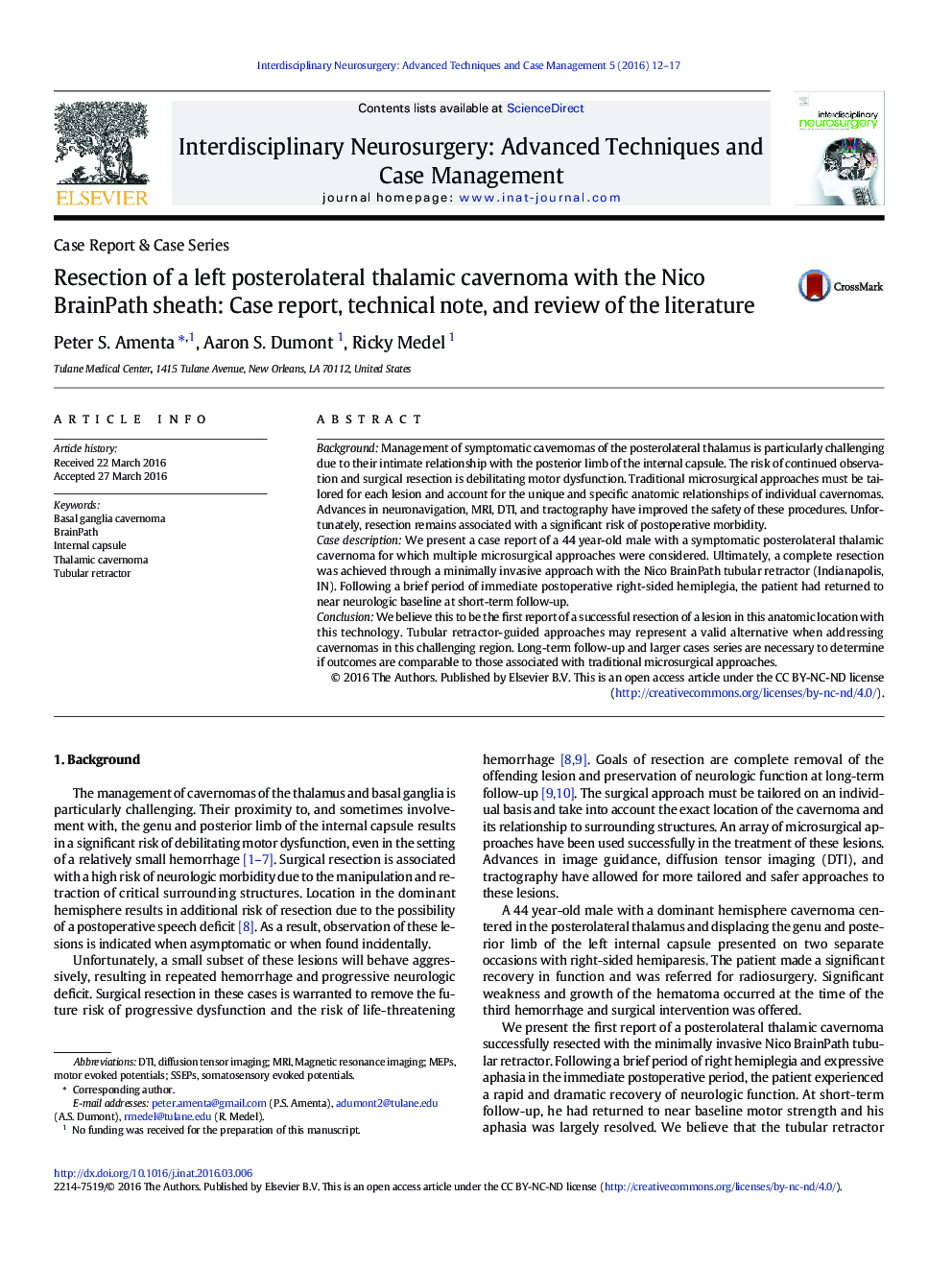| Article ID | Journal | Published Year | Pages | File Type |
|---|---|---|---|---|
| 3057710 | Interdisciplinary Neurosurgery | 2016 | 6 Pages |
•Cavernomas of the thalamus and basal ganglia may lead to debilitating motor dysfunction.•Surgical resection is associated with a high risk of neurologic morbidity.•Tubular retractors are a minimally invasive alternative to microsurgery.
BackgroundManagement of symptomatic cavernomas of the posterolateral thalamus is particularly challenging due to their intimate relationship with the posterior limb of the internal capsule. The risk of continued observation and surgical resection is debilitating motor dysfunction. Traditional microsurgical approaches must be tailored for each lesion and account for the unique and specific anatomic relationships of individual cavernomas. Advances in neuronavigation, MRI, DTI, and tractography have improved the safety of these procedures. Unfortunately, resection remains associated with a significant risk of postoperative morbidity.Case descriptionWe present a case report of a 44 year-old male with a symptomatic posterolateral thalamic cavernoma for which multiple microsurgical approaches were considered. Ultimately, a complete resection was achieved through a minimally invasive approach with the Nico BrainPath tubular retractor (Indianapolis, IN). Following a brief period of immediate postoperative right-sided hemiplegia, the patient had returned to near neurologic baseline at short-term follow-up.ConclusionWe believe this to be the first report of a successful resection of a lesion in this anatomic location with this technology. Tubular retractor-guided approaches may represent a valid alternative when addressing cavernomas in this challenging region. Long-term follow-up and larger cases series are necessary to determine if outcomes are comparable to those associated with traditional microsurgical approaches.
